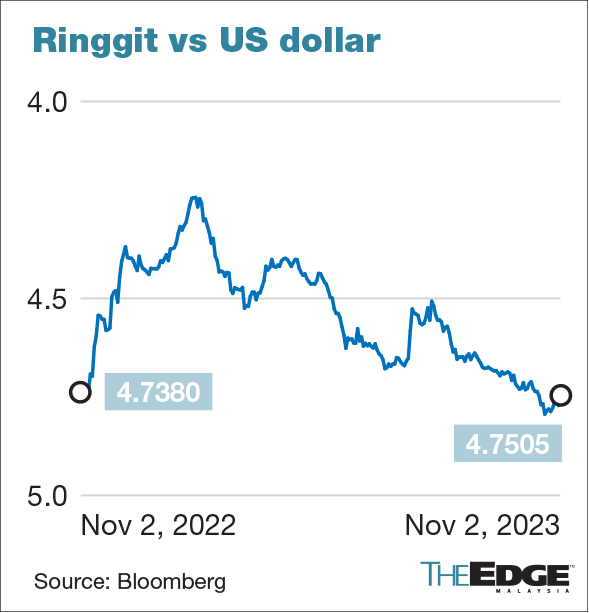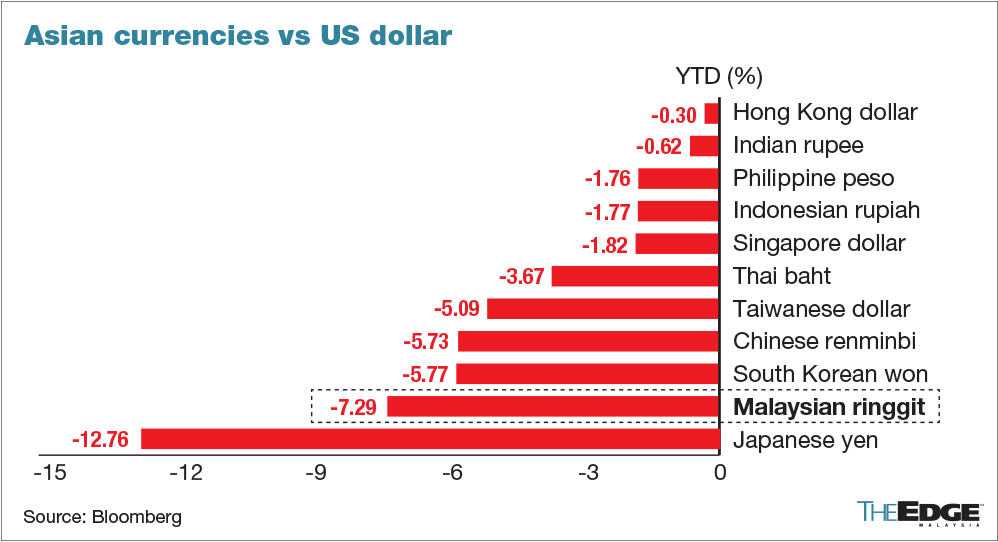_ZHD_5612%20BNM_20230731182351_theedgemalaysia_2.jpg&w=1920&q=75)
KUALA LUMPUR (Nov 2): Bank Negara Malaysia (BNM) maintained its overnight policy rate (OPR) at 3% in its Monetary Policy Committee (MPC) meeting on Thursday.
This marks the third consecutive session where the MPC has opted to pause the OPR at the same level, despite calls from some quarters for the central bank to raise the key interest rate to help stabilise the ringgit, which is near a 25-year low against the US dollar.
The last rate hike was in May, when BNM increased the OPR by 25 basis points to 3%.
Commenting on the latest monetary decision, the central bank said the advance gross domestic products (GDP) estimate points to an improvement in economic activity in the third quarter.
“Growth in 2024 will be driven mainly by resilient domestic expenditure, with some support emanating from the expected recovery in electrical and electronic (E&E) exports.
“Continued employment and wage growth remain supportive of household spending. Tourist arrivals and spending are expected to improve further,” BNM said in a statement upon the conclusion of the two-day MPC meeting on Thursday.
It said investment activity would be supported by continued progress of multi-year infrastructure projects and implementation of catalytic initiatives under the national master plans. On top of that, measures under Budget 2024 will provide additional impetus to economic activity.
While the growth outlook remains subject to downside risks stemming from weaker-than-expected external demand and larger and protracted declines in commodity production, upside risks to growth mainly emanate from stronger-than-expected tourism activity, a stronger recovery from the E&E downcycle, and faster implementation of existing and new projects, according to BNM.
Against this backdrop, the central bank said the MPC remains vigilant to ongoing developments to inform the assessment of the outlook for domestic inflation and growth.
“The MPC will ensure that the monetary policy stance remains conducive to sustainable economic growth amid price stability,” it added.
At the current OPR level, BNM noted that the monetary policy stance remains supportive of the economy, and is consistent with the current assessment of inflation and growth prospects.
Going into 2024, BNM said inflation is expected to remain modest, as both headline and core inflation had moderated due to easing cost pressure. In the third quarter, headline inflation averaged at 2%, followed by core inflation at 2.5%.
BNM cautioned that risks to the inflation outlook remain highly subject to changes to domestic policies on subsidies and price controls, as well as global commodity prices and financial market developments. The government’s intention to review price controls and subsidies in 2024 will affect the outlook for inflation and demand conditions.
On the global front, despite some signs of recovery emerging in the E&E sector, BNM warned that global trade remains soft, partly due to the shift in spending from goods to services and ongoing trade restrictions.
“Global growth remains weighed down by persistently elevated inflation and higher interest rates, with several major economies experiencing slowing growth momentum.
“Global headline inflation edged up partly due to higher commodity prices, while core inflation continued to moderate,” BNM added.
The monetary policy stance of most central banks is likely to remain tight, opined BNM. The global growth outlook remains subject to downside risks, mainly from higher-than anticipated inflation outturns, an escalation of geopolitical tensions, and a sharp tightening of financial market conditions.
'Weak ringgit will not derail Malaysia's growth prospects'
Commenting on the currency market, BNM said expectations of a higher-for-longer interest rate environment in the US and increased concerns over the escalation of geopolitical tensions had contributed to a persistently strong US dollar.
“This has affected other major and emerging-market currencies, including the ringgit,” it noted.
Nevertheless, the central bank assured that these developments are not expected to derail Malaysia's growth prospects, and it will continue to manage risks of heightened volatility, including to provide liquidity to ensure the orderly functioning of the domestic foreign exchange market.
“Financial institutions continue to operate with strong capital and liquidity buffers, with domestic financial conditions remaining conducive to sustain credit growth,” it added.
At the time of writing on Thursday, the ringgit had strengthened 0.38% against the US dollar at 4.7533.
On Oct 23, the ringgit dropped to a low of 4.7937 against the greenback. Year to date, the local currency has fallen 7.9%.



